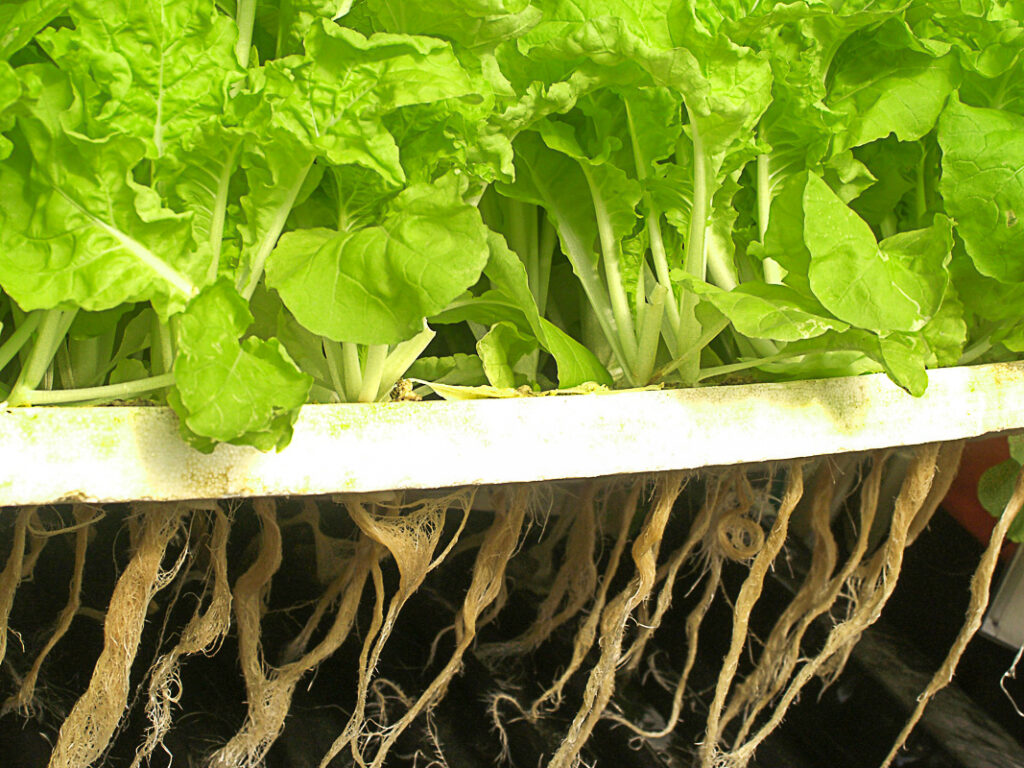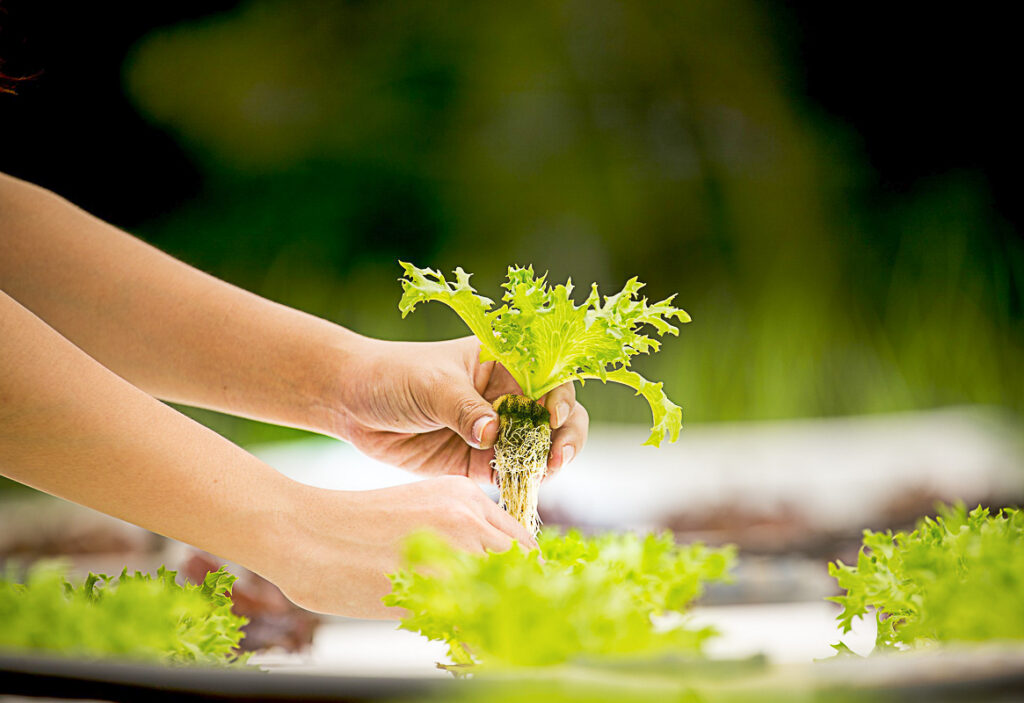If you’re an adventurous gardener who wants to try year-round growing using a home hydroponic system. However, if you’re not sure which one is best for you–well, you’ve come to the right place. In this article, we’ll cover seven of the best hydroponics systems for the home.
*This post contains compensated links. Find more info in my DISCLAIMER. As an Amazon Associate, I earn from qualifying purchases.
Want to start a hydroponic garden at home easily? Check out our recommendations for Best Hydroponics Starter Kits for Beginners.
What Is A Hydroponics System
The word “hydroponics” comes from the Greek and means “working with water.” A hydroponics system uses water infused with sixteen essential nutrients, instead of soil. Unlike soil where nutrient availability is often inconsistent and deficient, hydroponic grow systems make it easy for the plant to take up and utilize nutrients. The result is strong plant growth and high yields.
Hydroponic growing systems are also tightly controlled and usually indoors. This means less crop damage from pests, weather events, providing a year-round harvest. The best hydroponics systems can also be implemented anywhere including small space.
Learn about using outdoor hydroponics at home.
Types Of Hydroponic Systems

There are seven different hydroponic growing systems: Aeroponics, Drip, Nutrient Film Technique (NFT), Deep Water Culture (DWC), Ebb And Flow (or Flood and Drain), Wick, and Kratky.
All of these hydroponic system designs have three things in common:
- A way to anchor the plant in place
- System to deliver nutrient-infused water to the roots
- A way to deliver oxygen to the roots
Some hydroponic systems are passive, but most are active and require a pump and/or aerator. Passive systems are easier to implement, especially as a home hydroponics system, but they are less efficient and limit you to growing smaller plants. Still, if all you’re after is some herbs, lettuce, and other leafy greens, they’re a quick and painless way to start with a hydroponic grow system.
Learn how to grow vegetables at home:
Aeroponics System
In this design, the plants are suspended with their roots hanging in the air. A spray nozzle mists the roots with a nutrient-water solution at regular intervals. An aeroponic setup is usually a vertical tower with plants poking out the sides, with the mist emerging at the top and slowly descending past all the plant roots to the bottom.
This is one of the most productive, but also most high-maintenance, hydroponic designs. Because the plants are totally dependent on precisely timed water delivery, a clogged spray nozzle or pump breakdown can spell disaster. But because the roots receive just as much oxygen as water, it also results in larger yields than other systems.
Plus, its vertical design maximizes space and is highly water-efficient, making it one of the best hydroponic systems for homes.
Hydroponics Drip System
A drip system anchors each plant in a small pot filled with a soilless planting medium–like peat moss or perlite–and uses a system of small tubes to drip the nutrient solution onto the roots of each plant. The runoff is collected in a pan or tray below the pots and is then circulated back through the tubes using a pump.
You’ll need to monitor the nutrient balance in your solution and check the lines and tubes for clogs, but this setup can be used to grow larger plants like tomatoes, zucchinis, melons, and pumpkins.
NFT System – Hydroponics Film Technique
The Nutrient Film Technique uses gravity to supply roots with nutrients and water. The plants are suspended in tilted pipes or channels. The nutrient solution is pumped to the high end of the channel and then trickles down the entire length, running over the tips of the roots of each plant, before emptying into a reservoir and being recycled back up with a pump.
The NFT system is easy to scale up or down and needs no growing media. It is essential to have a good pump and to keep a vigilant eye on it–if the water stops flowing in an NFT system, the plant roots will wither quickly.
DWC System – Deep Water Culture System

One of the most popular hydroponic system designs, a DWC holds plants in a net pot over a bucket of oxygenated nutrient solution. An air stone connected to an air pump at the bottom of the bucket is essential to introduce oxygen to the water, otherwise, the roots will drown.
With its few parts and simple setup, a DWC is a great option for a first home hydroponics system. It’s inexpensive and low-maintenance. Just make sure it is only the roots of the plant that are in the water, not the stem or leaves!
Ebb And Flow Hydroponics Systems (AKA Flood And Drain)
This system works by placing plants in a soilless medium in a growing tray and periodic flooding that tray with water and nutrients. The water then slowly drains off into a reservoir so that the roots are exposed to oxygen, then the tray floods again before they have a chance to dry out.
Although this system does use quite a bit of growing medium, it’s also very flexible and can be used with plants of all sizes. The key to an ebb and flow system is making sure that your timing is right so that the plants’ roots don’t dry out in between floods.
Wick Hydroponics System
This passive hydroponic system uses a wick–a length of string, felt, or rope–to connect a plant resting in a medium on a tray to a reservoir full of the nutrient solution below it. Capillary action moves the solution from the reservoir up to the plant.
This simple and electricity-free method works well for growing small plants like lettuce, but not big ones like tomatoes.
The Kratky Method
This method uses a tub or trough filled with nutrient solution and suspends plants in net pots over it so that their roots are partially submerged. This partial wetting allows the roots to take up nutrients while also exposing them to oxygen.
As another simple passive system, the Kratky method is one of the best hydroponic systems for those who are new to “working with water.” It is easy to set up and get growing–just keep your tub out of direct sunlight to avoid algae growth!
FAQs – Types Of Hydroponics Systems
This is a difficult question. Not all systems work the same, produce the same harvest, and most importantly, cost the same. If you are new to hydroponics you are going to want to use a less complex system. If you are limited on space, this is also going to factor in. The answer to this is that it depends.
The easiest hydroponic system to use and most recommended for those new to hydroponics is the Deep Water Culture (DWC) system. This system is less complex to use, works well with a variety of vegetables, and produces great yields.
One of the biggest disadvantages of hydroponics is cost. Hydroponic systems are not cheap. To inexperienced home growers, they are complex. Finally, you need to provide more regular monitoring of the system.
